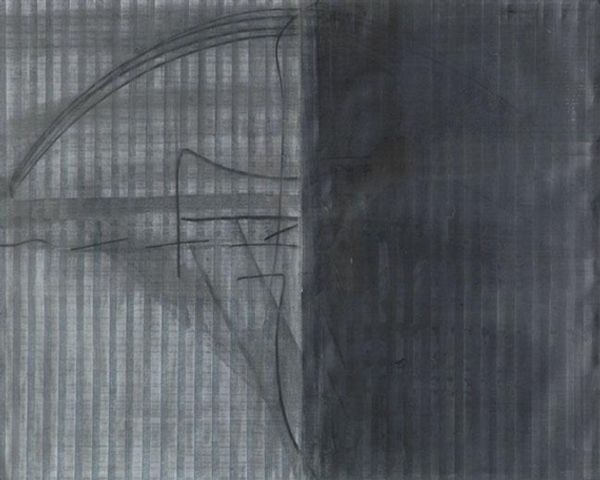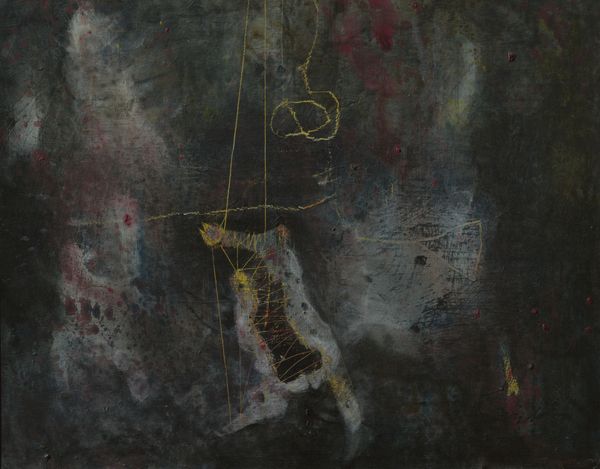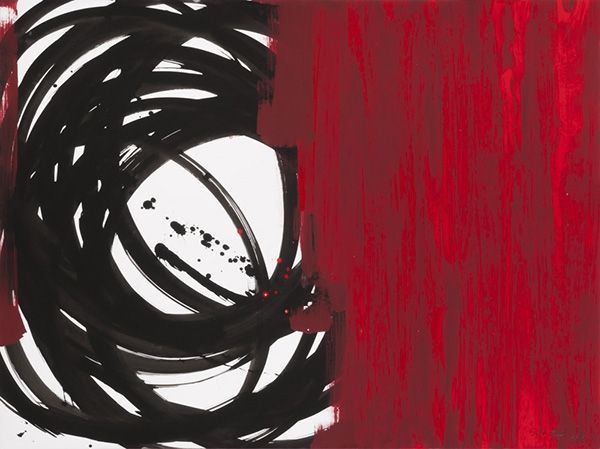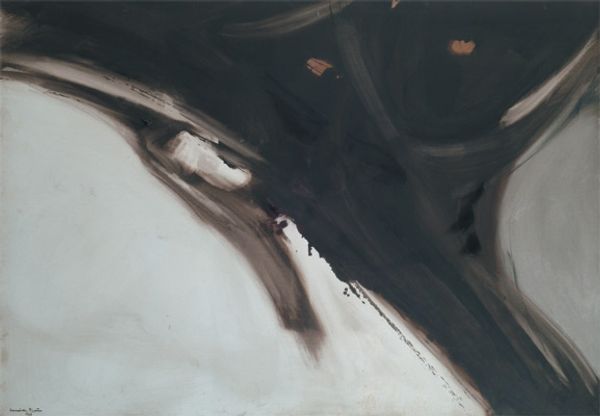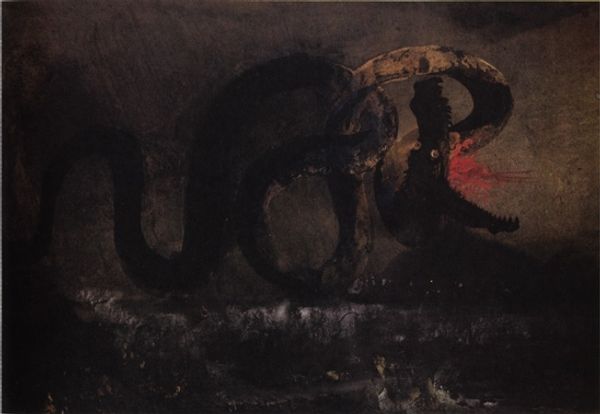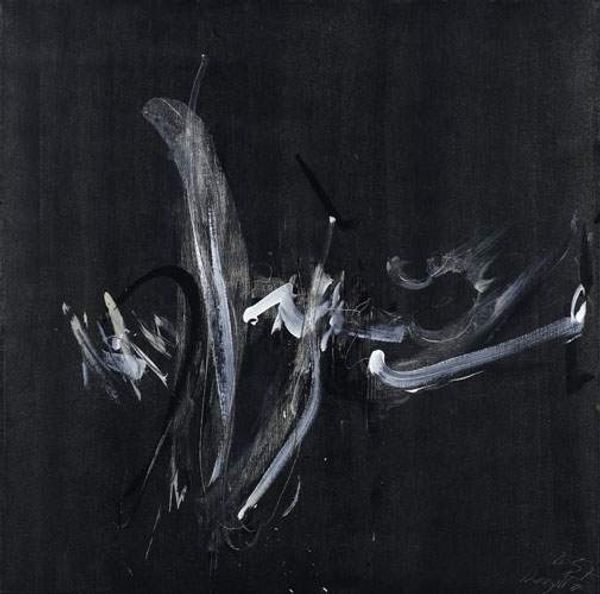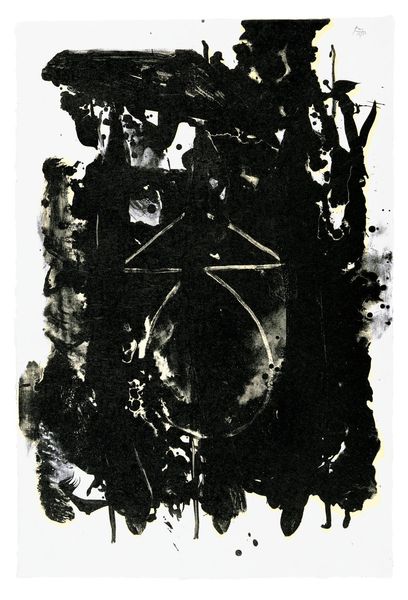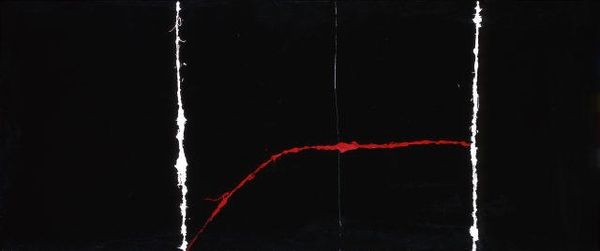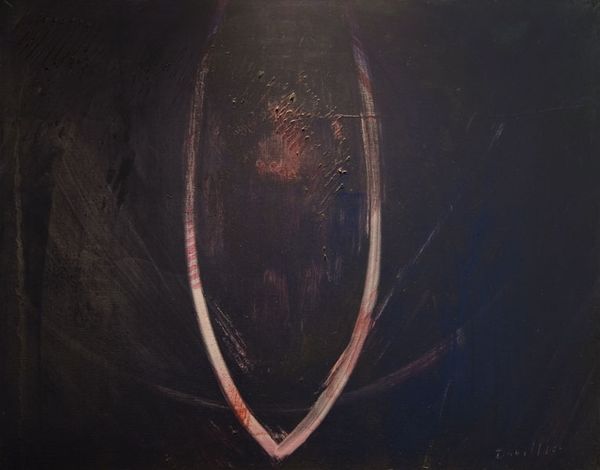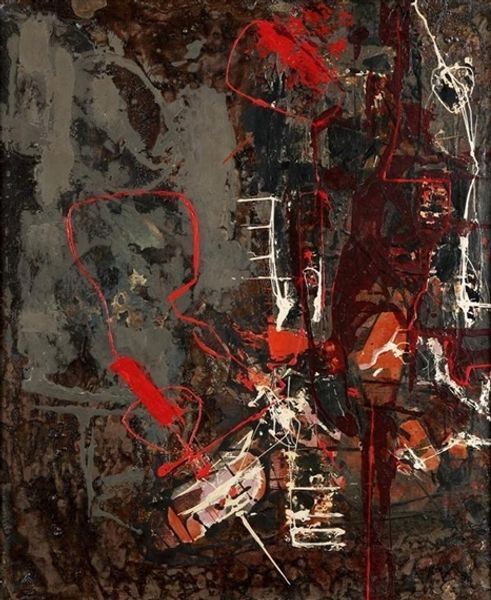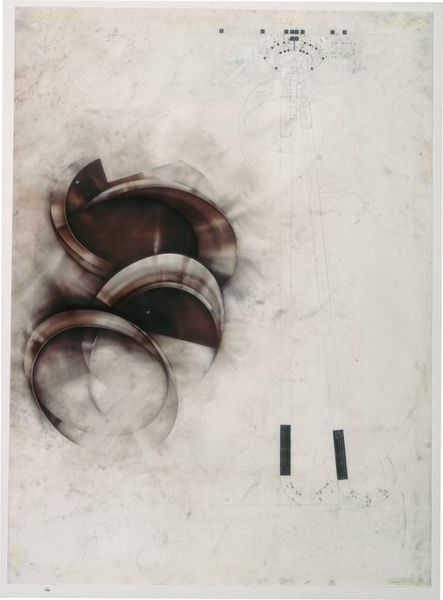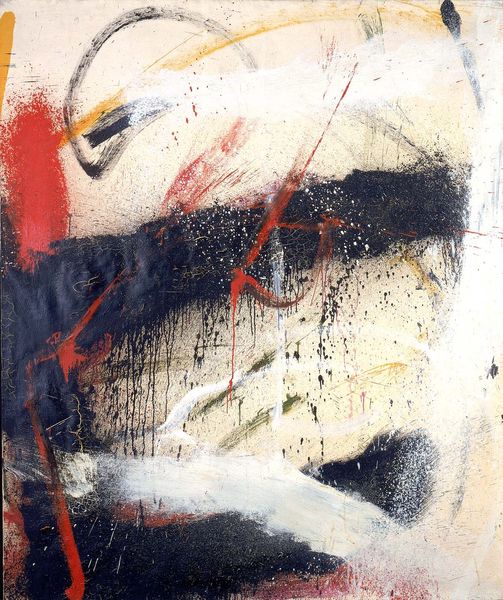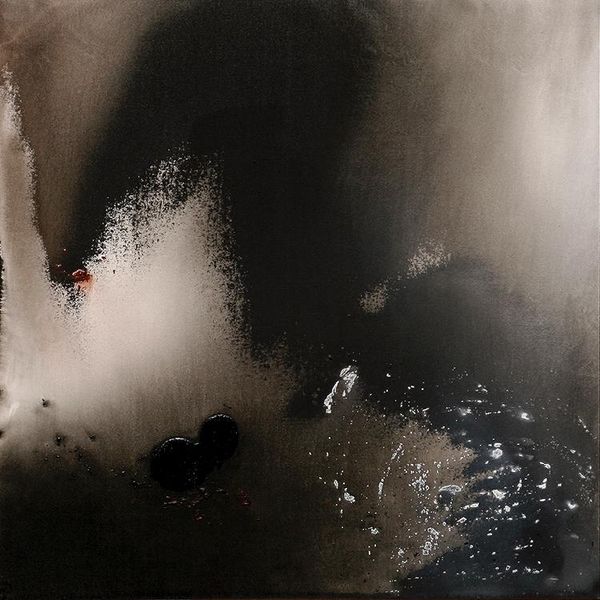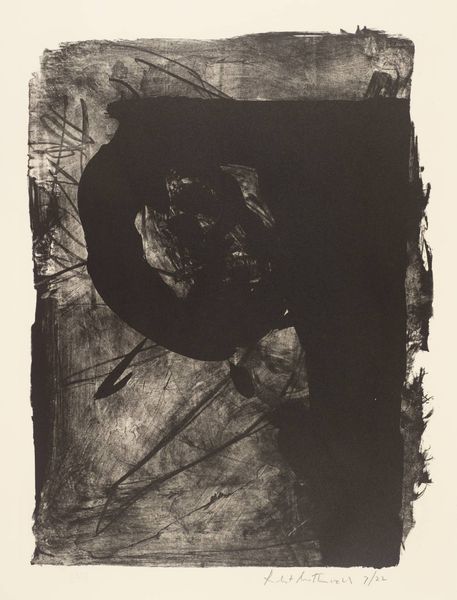
Copyright: Rene Duvillier,Fair Use
Curator: Up next, we have Rene Duvillier's "Jouissance de l'Espace n. 11," an acrylic painting from 1974. What's your first reaction to this piece? Editor: Immediately, I'm drawn to the interplay of stark black and white, interrupted by that single, vibrant red line. It evokes a feeling of tension, a delicate balance between chaos and order. Curator: That tension speaks volumes, especially considering the sociopolitical context of the 1970s. Duvillier, like many artists, was grappling with questions of power, identity, and liberation. Abstraction became a way to express the anxieties of the era, circumventing direct representation in favor of raw emotion and subjective experience. Editor: The red line is particularly compelling. In the language of iconography, red often symbolizes passion, energy, or even warning. Is it a life force, a boundary, or a threat? Its placement seems deliberately ambiguous. Curator: Indeed. This ambiguity allows for a multitude of interpretations. One could argue that the monochrome palette and abstract form are Duvillier's commentary on the binary structures of society itself, a visual challenge to established norms. The vibrant red cuts across this landscape, a flash of defiance. Editor: There's something primal in the shapes too, an almost archetypal feel. The black mass could represent the unknown, or even a void, and the red line could be the thread connecting us to what came before. Curator: Absolutely, and it’s important to consider Duvillier's involvement with matter painting and the use of line. The layering of acrylic becomes crucial in how the monochrome acts like an ideological field that either swallows the action or brings it to light. Editor: So it does! Overall, the painting speaks to our modern fragmented world, the broken wholeness after the war… the role of colors feels extremely potent in evoking the zeitgeist of the time. Curator: It does; viewing “Jouissance de l'Espace n. 11” through both our lenses offers, I think, a broader, richer understanding of Duvillier's intent. Editor: I agree, understanding symbols and artistic intentions is really vital. It changes your interaction with the work.
Comments
No comments
Be the first to comment and join the conversation on the ultimate creative platform.
